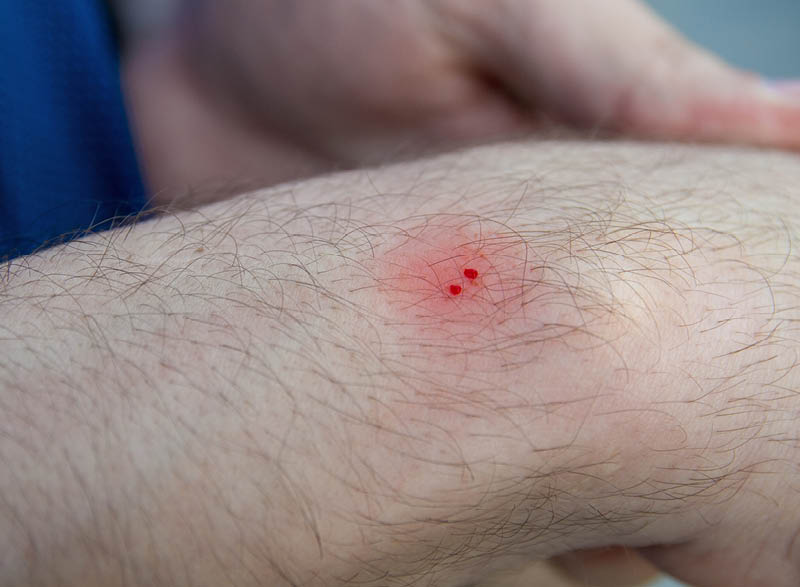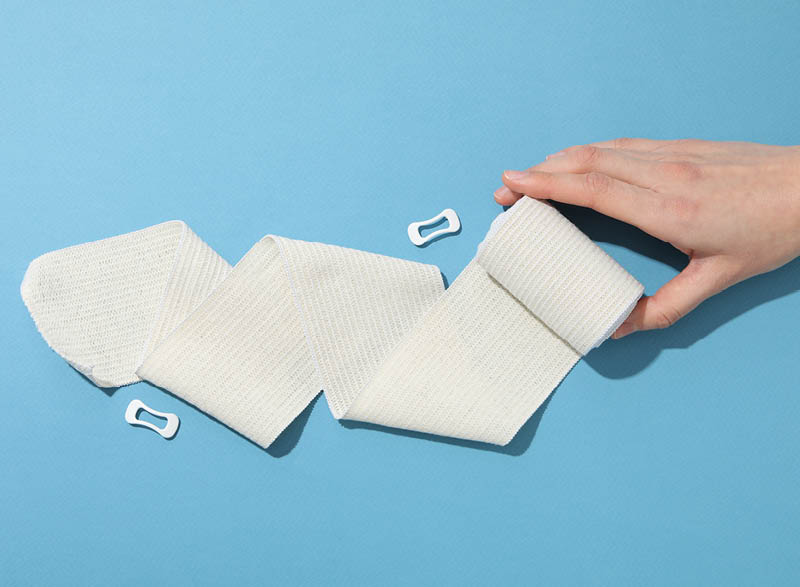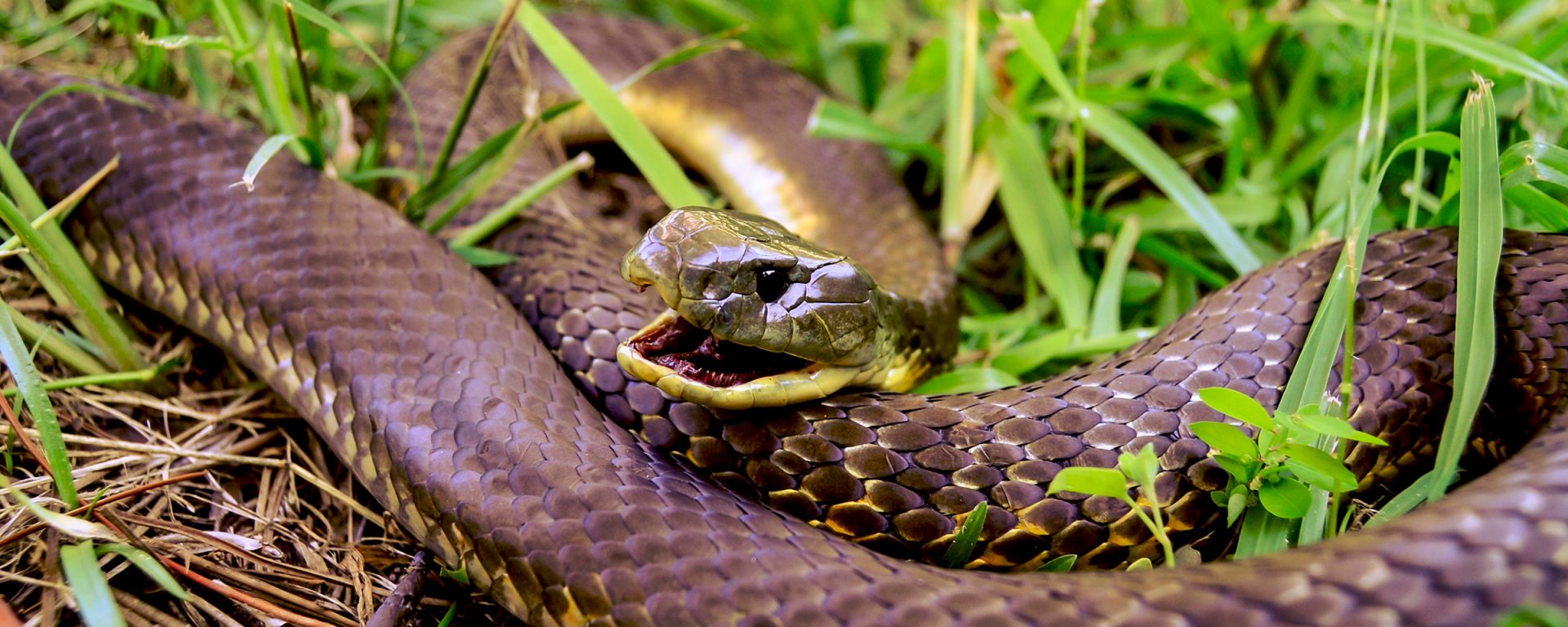
Timothy Spokes, lecturer in paramedicine and registered paramedic, nurse and midwife, knows how to treat a snake bite.
In the year 2000, while working for the Royal Flying Doctor Service at Ayers Rock, he was Australia’s most exposed health professional to snake bites, according to the Commonwealth Serum Laboratory.
Plus, he’s been bitten by a snake himself.
“I was living in Perth and my partner and I used to go to the park together and throw the ball for the dog to chase. One day, the dog wouldn’t get the ball out of the reeds. So I went over, reached down, and pulled out the ball. As I did so I felt a sharp scratch, but assumed it was just the pointed reeds.
“Later that day, a friend who was visiting, a physician, told me I didn’t look well, and had me take my top off and examined my chest and back. She saw Petechi bleeds [spots of bleeding under the skin] and said she reckoned I’d been bitten by something. I was still claiming it was the reeds, but she said, ‘I don’t care what you think. You’re going to hospital.’
“At the hospital, the nurses weren’t as worried and had me take a seat. But then I started sliding down in my chair, just feeling worse and worse, so my friend told the nurses: ‘I’m an emergency physician. This man needs to go into the resuscitation unit now’, and they took one look at me and agreed.
“Turns out I was bitten by a dugite [a venomous snake native to Western Australia]. Luckily I didn’t need anti-venom, but I was in hospital in observation for 48 hours before I could go home. And it hurt like hell.”
So who better than to tell us how to treat a snake bite? Over to you, Timothy.
How to treat a snake bite – the key things

Don’t move
“It’s the most essential thing. Don’t move.”
“Humans have a protective mechanism, so if you’re bitten you’ll get an increased amount of adrenaline going around your body and your reflexes will kick in. Your body is trying to get you as far away from the danger as possible. But you need to pull yourself up, stop and drop. Stay as still as possible.
“Why? Well, the venom gets into the lymphatic fluid in your body. And your muscles moving carry that fluid around your body and, eventually, to your heart. Speeding up the distribution of venom. So the slower we move, the more we can slow the fluid – and the venom – from moving through the body.
“Two examples from my time as a paramedic in the bush: a farmer in the wheat belt got bitten while moving hay. Shook his hand around like mad and died before we could get him to hospital. A geologist working on her own out in the desert messaged us over her Garmin Ranger. She did not have a snake bite kit so we told her to lay still, lay down and not move. And that’s what she did. And she survived.”
Call 000
“The only energy you should use is to call emergency services. Then lay still and let people come to you, particularly if you don’t have a snake bite bandage.
“So, I guess this means the second piece of advice is, really, have a phone or an SOS device on you at all times so that you can reach emergency services, wherever you are.”

Carry and use a snake bite bandage
“A snake bite bandage can further inhibit the lymphatic fluid from moving around your body and towards your heart. It can’t be any old bandage, as you need the right level of pressure and width.
“A snake bite bandage has oblong shapes printed on it, and when it’s at the right pressure these turn into squares. That’s the correct amount of pressure to inhibit the fluid but not damage the limb.
“Ideally, if you’re with another person, have them put it on, so you minimise movement. But if you’re on your own, fit the bandage over the bite site and then the full limb, call 000 and then lay/sit still.
“If you don’t have a bandage, don’t try to fashion one out of clothes or something else; if it’s not a bandage, there’s nothing that’s more effective than just lying still.
“Plus, if you live in an area where snakes are prevalent, on a farm, say, keep a snake bite bandage in your house, go-bag or car. Make sure everyone knows where it is and how to use it, and place instructions with it so others can follow them. After all, if you’re unconscious from a bite, you definitely need someone else knowing how to treat a snake bite.”

Preventative measures
Keep doors shut
“Did you know that 14 per cent of snake bites occur inside buildings? Why? Because you forget to close the door or keep the doors slightly ajar. I have a brilliant picture from my son-in-law when he’s four years old sitting in the lounge room and resting up against the glass sliding door. And there’s a big brown snake trying to get in and I think, yeah, the fly screen door’s closed. All good.”

Wear proper protection
“Eleven per cent of snake bites occur while walking through the bush. So if you are going into an area where snakes are prevalent (besides taking a snake bite bandage and your phone), wear snake-proof gators and solid, high-sided walking boots. Some Australian snakes’ fangs are over two centimetres long, and they will penetrate clothes and flimsy shoes. The most common bite site is actually the lower limb, between your knee and your ankle, so proper protection is a must.”
Leave snakes alone
“Don’t try to kill or capture or in any way play with a snake. You’re much less likely to get bitten by a snake if you leave them alone.
“Treatment for a snake bite is very simple and easy to learn; however without it, the bite can be fatal.”
Help others on the front line
If you want to help communities as an emergency responder, you’re best bet is to start with our Bachelor of Paramedicine.1 You’ll learn in our simulation facilities and industry-standard equipment on campus at Bathurst or Port Macquarie. Plus, you’ll also undertake professional work placements, learning directly from practising paramedics in real-life emergency care settings.
So when you graduate you’ll be ready to make a difference and help people – even if they’ve been bitten by a snake.
1CRICOS: 036176A


You must be logged in to post a comment.